May 2-4, 2016; Cambridge, MA
.jpg)

.jpg) 173 researchers, clinicians and experts in the field of Progeria gathered at the Royal Sonesta Hotel & Conference Center in Cambridge, MA for the Progeria Research Foundation’s 8th International Scientific Workshop: Across the Table, Around the Globe. 25 speakers and 46 poster presentations from 14 countries showcased important scientific findings, presented the progress in translating bench research to potential therapeutic treatments and inspired future collaborations between the research and medical communities. The breadth and scope of work is expanding every year as researchers and clinicians work towards the mutual goals of finding a cure for progeria and unlocking the mystery of aging and aging diseases.
173 researchers, clinicians and experts in the field of Progeria gathered at the Royal Sonesta Hotel & Conference Center in Cambridge, MA for the Progeria Research Foundation’s 8th International Scientific Workshop: Across the Table, Around the Globe. 25 speakers and 46 poster presentations from 14 countries showcased important scientific findings, presented the progress in translating bench research to potential therapeutic treatments and inspired future collaborations between the research and medical communities. The breadth and scope of work is expanding every year as researchers and clinicians work towards the mutual goals of finding a cure for progeria and unlocking the mystery of aging and aging diseases.
.jpg)
The Progeria Research Foundation 8th International Scientific Workshop: Across the Table, Around the Globe attendees.
The Meeting Agenda at a Glance:
- Children and Parents Living with Progeria: Toddlers and Teens
- Clinical Trial Outcomes and Biomarker Discoveries
- New Pharmacological Interventions
- Molecular and Cellular Mechanisms in HGPS and Aging
- Presentation by Francis S. Collins, NIH Director
- Emerging Therapeutics
- The Next Phase: Strategies for the future- science and medicine coming together
PRF Honors Dr Frank Rothman:
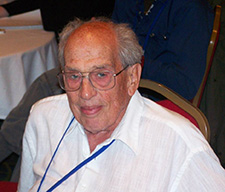
Frank Rothman, PhD, Professor and Provost Emeritus at Brown University and one of the original members of The Progeria ResearchFoundation Medical Research Committee, was recognized for his many contributions to PRF. Dr. Rothman, received his Ph.D. in organic chemistry in 1955 from Harvard University, then switched to the emerging field of molecular genetics. He joined the faculty of Brown University in 1961, and taught courses in biochemistry, genetics, molecular biology, and aging, winning several teaching awards. Dr. Rothman’s research on the regulation of gene expression in bacteria and cellular slime molds was funded by nine consecutive grants from the NSF. He chaired the Brown University Undergraduate Curriculum Committee, and was the founding director of the Graduate Program in Molecular and Cell Biology. From 1984 to 1990, as Dean of Biology, he led reform of the introductory biology courses and was Program Director of Brown’s grant for Undergraduate Biology from HHMI. From 1990-1995, he served as Provost of Brown University, a role which involved him in all institutional issues regarding science, mathematics and engineering education. Since his retirement from Brown University in 1997, he has been active with the Progeria Research Foundation as an instrumental member in organizing many of the PRF scientific workshops and sub-specialty meetings thus successfully pushing the boundaries of Progeria research and bringing the field to where it is today. Leslie Gordon, MD, PhD thanked Dr. Rothman for his 18 years of service to The Progeria Research Foundation.
PRF 8th International Workshop Summary:
.jpg)
Bill, Tina, Ian & Meghan Waldron; Laura & Zoey Penny; Heather Ryan & Carly Kudzia
The Workshop kicked off with a family panel entitled Children and Parents Living with Progeria: Toddlers and Teens, moderated by Leslie Gordon, MD, PhD (Progeria Research Foundation). Researchers had the unique opportunity to meet some of the people their work could help: Meghan Waldron, her brother, Ian, and her parents Tina and Bill; Carly Kudzia, along with her parents Heather and Ryan; and Zoey Penny with her mother, Laura. Meghan spoke about her experience living with Progeria and read a poem she recently had published in the magazine Stone Soup. Carly and Zoey answered questions from the audience and led the entire group in a lively game of Simon Says. Parents on the family panel answered questions from the audience and thanked the research and medical communities for their work towards finding a cure.
Leslie Gordon, MD, PhD (Progeria Research Foundation, Boston Children’s Hospital, Alpert Medical School at BrownUniversity, USA) introduced the plenary speaker, Vicente Andrés, PhD (Centro Nacional de Investigaciones Cardiovasculares (CNIC), Spain) who spoke eloquently of the landmark pre-clinical research findings which have led to clinical trials with children. He noted the modest clinical benefits achieved so far for children with Progeria and emphasized the importance for researchers to continue the basic and medical research needed to find more efficient therapies to treat and cure Progeria.
Day 2 started with a session titled: Clinical Outcomes and Biomarker Discovery in HGPS. Leslie Gordon, PhD, MD kicked off the session presenting an overview of the natural history of disease in HGPS and the promising results from the Boston Children’s Hospital clinical trials. Ashwin Prakash, MD (Boston Children’s Hospital, USA) and Brian Snyder, MD (Harvard Medical School, Boston Children’s Hospital, USA) presented their findings in cardiology and musculoskeletal manifestations from their work with the clinical trials. Monica Kleinman, MD (Boston Children’s Hospital, USA) presented the Triple Therapy Trial Results. Zhongjun Zhou, PhD (University of Hong Kong, Hong Kong) presented his pilot clinical trial using resveratrol as a potential new therapeutic drug for HGPS – his results are still pending. The session continued with Marsha Moses, PhD (Harvard University, Boston Children’s Hospital, USA) exciting work with biomarkers – a method for testing if treatments are working using non-invasive methods. Jesús Vázquez, PhD (CNIC, Spain) wrapped up the morning presenting the development of a new technique to quantitate lamin A and progerin accumulation found in the blood.
The afternoon session continued with Pharmacological Intervention in HGPS and Aging Models. Brian Kennedy, PhD (Buck Institute, USA), presented findings on mouse studies testing resveratrol and rapamycin, and Fernando Osorio, PhD (Universidad de Oviedo, Spain) looked at NF-kB signaling in mice concluding that DOT1L is a potential new target for HGPS treatment. Dudley Lamming, PhD (University of Wisconsin-Madison, USA) presented findings indicating that low protein diets can significantly reduce mTORC1, a protein kinase targeted by rapamycin treatment, without the same negative side effects. Claudia Cavadas, PhD (University of Coimbra, Portugal) showed her promising results of NPY rescuing several hallmarks of cellular aging in HGPS cells and Delphine Larrieu, PhD (University of Cambridge, United Kingdom) presented exciting findings that indicate that Remodelin and NAT10 inhibition show marked improvement on HGPS mice.
The evenings for Day 1 and Day 2 were capped off with Poster Presentations ranging in topics from new potential therapeutic targets for treatment such as Gherlin and JH4, to potential biomarkers and technology for non-invasive measures to determine efficacy of treatment, to new discoveries in atypical progeria patients, and to recent findings from clinical trials.
Titles
- PRF By The Numbers and The Progeria Research Foundation Programs
- Somatic Mosaicism with Two Populations of Progerin-Producing
- MutationsMultiplex Screen of Plasma Biomarkers in Hutchinson-Gilford Progeria Syndrome
- Ghrelin Enhances Progerin Clearance and Rescues the Senescent Phenotype of Human Hutchinson-Gilford Progeria Syndrome Cell
- The Progeria Research Foundation Cell and Tissue Bank and Diagnostic Program
- Subgingival Microbial Profile of Individuals with Hutchinson-Gilford Progeria Syndrome: Comparison with periodontal Health and Periodontal Disease Using Human Oral Microbe Identification Microarray
- The “Alphabet Soup” of Brain Magnetic Resonance Imaging for Progeria
- Endothelial Phenotype in Hutchinson-Gilford Progeria Syndrome
- Impaired Centrosome Orientation and Nuclear Movement in Migratory Fibroblasts Are Characteristic of Premature and Normal Aging
- Progerin and Lamin-A Are Equally Phosphorylated in iPSC-derived Mesenchymal Stem Cells: Quantitation by Fine-excision and Alignment Mass Spectrometry (FEA-MS)
- Investigation of the Role of the Canonical Wnt-β-catenin Signaling Pathway During Osteogenic Differentiation and Bone Quality in Hutchinson-Gilford Progeria Syndrome
- A Novel Form of Lamin A/C
- Everolimus Improves the Phenotype of Laminopathy Cells
- Schema and Overview of Progeria Clinical Trials
- The Δ35 and Δ50 Deletions Disrupt O-GlcNAc-modified ‘sweet spots’ Unique to the Lamin A Tail: Implications for Metabolic (dis)regulation of Lamin A
- Identifying Causative Mutations in Atypical Progeria by Exome Sequencing
- Development of an Ultrasensative Immunoassay for the Quantification of Progerin in Matrix
- Atherosclerosis in Progeria: Insight from New Mouse Models with Ubiquitous and VSMC-specific Progerin Expression
- Elucidating the Proteolytic Activity of Human ZMPSTE24 and Disease Mutations
- Pre-clinical Analysis of JH4-derived Chemicals for Treatment of Hutchinson-Gilford Progeria Syndrome
- Vitamin D Reduces Progerin Expression and Improves HGPS Cellular Defects
- Repression of the Antioxidant NRF2 Pathway in Premature Aging
- Sphingolipid Metabolites and the HGPS Phenotype
- Therapeutic Effects of Human Telomerase mRNA on Fibroblasts Derived from Patients with Hutchinson-Gilford Progeria Syndrome
- Atypical Hutchinson-Gilford Progeria Syndrome
- Ophthalmic Manifestations of Progeria
- Menarche in Progeria
- Premature Senescence in Hutchinson-Gilford Progeria Syndrome Cells Results from p53 Activation in Response to Replication Stress
- Induction of microRNA-29 leads to a Progeroid Phenotype in Mice
- Gross and Fine Motor Findings in a Small Cohort of Children with Classical Hutchinson-Gilford Progeria Syndrome
- Micropatterned Substrates to Accelerate Pathological Smooth Muscle Cells Aging
- Low Levels of Progerin Result in Adipose Tissue Depletion Over Time
- Atypical Progeroid Syndrome Due to a Mutation in the Coiled-coil Domain of Lamin A
- Relationship of Selected Lower Extremity (LE) Range of Motion (ROM) Impairments to Physical Performance and Age in Hutchinson-Gilford Progeria Syndrome
- Functional and Topological Interplay of the Telomeric Protein AKTIP with Lamins
- Update on Impact of Farnesylation Inhibitors on Survival in Hutchinson-Gilford Progeria Syndrome
- The Nuclear Envelope Protein Luma is Dispensable for Normal Cardiac Function
- Δ133p53 Isoform as a Novel Therapeutic Target for Hutchinson-Gilford Progeria Syndrome
- Mutation Abolishing the ZMPSTE24 Cleavage Site in Prelamin A Causes a Progeroid Disorder
- Low NO: Common Pathway in Normal Aging and Progeria? Ammonia Oxidizing Bacteria in Human Skin Microbiome as Anti-Inflammatory Agent
- Progeria and Dermatology: A Forgotten Tale?
- Transcript Analysis of Early Postnatal Keratinocytes, Osteoblasts and Osteocytes from Hutchinson-Gilford Progeria Syndrome Transgenic Mice
- Comparison of the Skeletal Efficacy of Treatment on a G608G Progeria Mouse Model
- Dental and Craniofacial Manifestations of Hutchinson-Gilford Progeria Syndrome: A Longitudinal Study
- Contrast Enhanced MicroCT (CEuCT) for Monitoring Cartilage Structural Properties and Biochemical Composition in a G608G Progeria Mouse Model
- Drug Screening on Hutchinson-Gilford Progeria Syndrome Using Induced Pluripotent Stem Cells
Day 3 delved deeper into cell biology and physiology. The morning session titled Molecular and Cellular Mechanisms in HGPS and Aging was moderated by Maria Eriksson, PhD (Karolinska Institutet, Sweden). Robert Goldman, PhD (Northwestern University, USA) started the day off looking at the nuclear lamin isoforms in the nuclear lamina and the development of a 3D super-resolution microscopy technique.
.jpg)
Dr. Frank Rothman, the workshop organizer, poses a question.
Katherine Wilson, PhD (Johns Hopkins School of Medicine, USA) presented her work looking at the enzyme OGT which adds a sugar molecule to target proteins and is essential to all cells. Giovanna Lattanzi, PhD (CNR Institute for Molecular Genetics, Italy) presented her findings that retinoic acid and rapamycin increase the lamin A to prelamin A ratio thereby rescuing DNA repair machinery in the cell. Gerardo Ferbeyre, MD, PhD (Université de Montréal, Canada) has been studying interphase serine 22 phosphorylation of endogenous mutant lamin A in HGPS cells while Colin Stewart, D Phil (Institute of Medical Biology, Singapore) has focused on SUN1, a protein that effects HGPS cells. Maria Eriksson, PhD concluded the session with her work looking at the potential beneficial effects of resveratrol on bone remodeling in HGPS mice.Day 3’s afternoon session, titled Emerging Therapeutics, kicked off with Tom Misteli, PhD (NIH/National Cancer Institute, USA) who gave an overview of the search for candidate drugs for potential treatment. Francis Collins, MD, PhD shared promising results in mouse studies with the drug everolimus. Joseph Rabinowitz, PhD (Temple University, USA) presented the first steps in research into gene therapy. John Cooke, MD, PhD (Houston Methodist Research Institute, USA) finished out the session with a dynamic presentation of telomerase RNA therapy as novel potential therapy.
Judy Campisi, PhD (Buck Institute, USA), Mark Kieran, MD, PhD (Dana Farber Cancer Institute, USA) and Francis Collins, MD, PhD moderated the Summation of Meeting and Key Findings and spearheaded a lively discussion about the future for progeria research. As a fitting closure to the conference, Francis Collins, MD, PhD performed the song he wrote, Dare to Dream, inspired by a conversation he had with Sam Berns at TEDMED 2012.[vc_column width=”1/6″][vc_custom_heading text=”Attendees” font_container=”tag:h1|text_align:right” use_theme_fonts=”yes”]
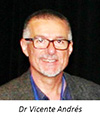 |
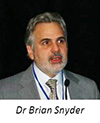 |
 |
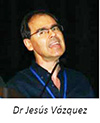 |
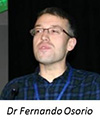 |
.jpg) |
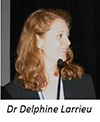 |
 |
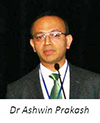 |
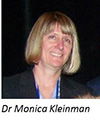 |
.jpg) |
 |
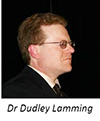 |
.jpg) |
 |
.jpg) |
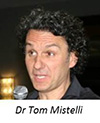 |
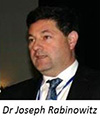 |
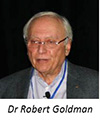 |
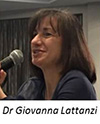 |
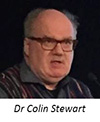 |
.jpg) |
.jpg) |
